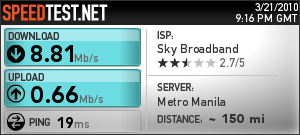BARCODES OF CHINA PRODUCT
Excerpts from Email..
"Dear friends,
The whole world is now wary of imported products, esp from China, in light of the melamine-tainted milk powders. To differentiate which product is made in Taiwan or China, look at the first 3 digits of the product's barcode--- the numbers 690 / 691 / 692 are MADE IN CHINA. 471 is Made in Taiwan .
It is our human right to know this information. Since the government and related departments are not educating the public, therefore we have to watch out for ourselves.
Nowadays, businessmen know that consumers do not prefer products "made in china", so they don't show from which country it is made. By looking at the barcode, you will know from the first 3 digits if 690-692-- then it is made in China, or
00 ~ 09 USA & CANADA
30 ~ 37 FRANCE
40 ~ 44 GERMANY
49 - JAPAN
50 - UK
Email source: Jinkie of qcstyro.com
But read this one disclaiming this and decide for yourself what to believe.
"
| Barcodes not guide to product origin | ||
| | ||
| SENIOR technician Chan Chee Kong, 54, found himself scrutinising food-product barcodes after reading an e-mail he recently received. The e-mail claimed that consumers would be able to differentiate between Taiwan- and China-produced food by decoding the first three digits of the 13-digit European Article Number (EAN) barcode usually found on packaging. The EAN-13 barcode is defined by global-standards organisation GS1, which administers barcodes for retail goods in about 140 member countries. EAN is a superset of the Universal Product Code - the world's first barcode symbology. The latter was formally established in 1973. Singapore got its assigned GS1 prefix back in 1986 or 1987, according to a local GS1 spokesman. China's assigned GS1 prefixes are 690, 691 and 692, while Taiwan's is 471. The e-mail went on to exhort its recipients to avoid food products with China- assigned barcodes, referring to the recent scandal surrounding tainted China-made food products. Mr Chan found out that, contrary to what the e-mail said, his Chinese cooking wines bore the Singapore-assigned prefix 888, despite being labelled as a product of China. He told my paper that he also discovered Malaysian products that appeared to have been re-packaged in Singapore had the '888' barcode on their labels. So, while it is true that each country does have a unique three-digit prefix, it does not reflect the origin of its contents. This is stated in bold on the GS1 website: "GS1 prefixes do not provide identification of country of origin for a given product." It added that the prefixes indicate only the locations from which companies apply for the barcode. In other words, a company that registers its barcode in Singapore will carry the '888' prefix on its products, even if they were manufactured elsewhere. A spokesman for the Agri-Food & Veterinary Authority said that the agency does not have any regulation pertaining to barcodes on food packaging. However, Singapore's food regulations do require that basic information - such as a list of ingredients, the name and address of the manufacturer or importer, and the country of origin - be declared on food labels in English. |
Source: achchan@sph.com.sg-asiaonedigital















